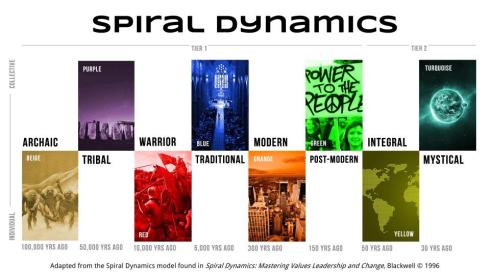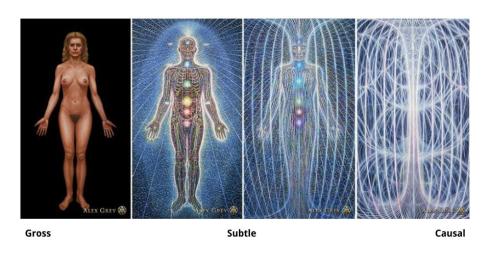
THE FOOL
The archetype of the fool or the clown shows up in most every well-known story with a beginning, middle and end. This character appears in dramatic work in various forms from the “Wise Fool” of the Greek Tragedies to Shakespeare’s spritely Puck in A Midsummer Night’s Dream to Dori in Finding Nemo.
These “foolish” characters typically provide comic relief and serve as a foil or sense of conscience to the protagonist. They do not follow society’s ways, are usually not the most fashionable and always speak the truth. They are transgressive and free in sometimes dangerous ways. They invite us to wear masks — or to take off our masks and live a life without labels and ideals. The fool, according to Joe Bunting (The Write Practice) is usually a “lowly” character, and sometimes a blank slate, that will reveal the character of others based on how they themselves are treated. Sometimes an antagonist we thought was our friend will show their true colors by betraying or mistreating the fool, usually in the final act.
In Shakespeare and the Human Mystery, J. Phillip Newell writes, “The fool is calling us to be truly ourselves and points out the falseness of what we have become. He is not, however, over and against his hearers. Rather, he invites them to discover the fool within themselves. In All’s Well That Ends Well, when Paroles says that he has found the fool, the clown replies, “Did you find me in yourself, sir?”
In ancient Egypt (as early as 2400 BC), clowns served a socio-religious and psychological function in the court, with the role of priest and clown traditionally being held by the same person.
In many Native American cultures, the Trickster God is represented as Coyote, a sacred clown. During certain ceremonial performances, masks are made of clay and worn for each direction of the medicine wheel and a Heyoka (a mystic, medicine man or outsider) plays the role of the backwards clown, doing everything in reverse.
There is, within Christian circles, those known as “Holy Fools” or “Fools for Christ.” These are the ascetics, mystics and outcasts that give up their worldly possessions and flout society’s conventions. The Hindu equivalent would be Avadhuta (The Sanskrit word for people who “do not identify with their mind or body, names or forms, a person held to be pure consciousness.”). Elsewhere, in Islam there are the Qalandariyya (whirling dervishes) and Malamatiyya (Sufi mystics with a staunch belief in self-blame).
The first card of the Major Arcana Tarot deck is that of The Fool. It shows him in all his youthful innocence stepping off a cliff and into the unknown without judgement, but also without wisdom. He is the embodiment of a new beginning. He is actively sacrificing his past. And he is represented by the number Zero.
As George Leonard writes in his classic Mastery, zero is “the fertile void from which all creation springs, the state of emptiness that allows new things to come into being.” The fool represents what is known in Zen Buddhism as shoshin or “beginner’s mind” — the attitude that makes real learning possible.
At the end of his life, when making his own funeral arrangements, Jigoro Kano (the founder of Judo), asked to be buried in his white belt. The white belt is the symbol of the lowly student just beginning their study. It’s what you wear when you know absolutely nothing. The world’s highest ranking Judo master asked to be memorialized with the marks of the beginner.
While the fool archetype continues to be used abstractly as a metaphor and a device in storytelling or Jungian psychology, the actual court jester has been replaced in modern society by professional comedians. Comedians such as Dave Chappelle, Louis C.K., George Carlin and Bill Hicks allow us to laugh at ourselves and our society by holding up a mirror to the “falseness of what we have become.” This humor comes from speaking the truth and crossing cultural norms. In some cases (Carlin and Hicks) they speak truth to power in an attempt to shake up the political systems of the day.
THE CLOWN
And then there is the beloved clown.
According to circus expert Hovey Burgess, the most prevalent character clowns in America are the Hobo, the Tramp, and the Bum. The Hobo, in particular, is described as being “down on his luck, but maintaining a positive attitude.”
The fear of these clowns extends beyond “Pennywise” from Stephen King’s It or serial killer John Wayne Gacy. It is a deep-seated societal fear. A 2008 study at the University of Sheffield in England was conducted with 250 children ranging from 4 to 16 years of age. The children were shown various renderings of a hospital redesign, including a variety of wallpaper. Unanimously, the children rejected or showed aversion to wallpaper featuring clowns.
Fear of clowns could be as simple as the fact that most clown behavior is considered to be transgressive or anti-social (the hobo, the tramp, the mystic, the saint). Would you want your child visiting with the old medicine man near the edge of town with charcoal and ashes painted on his face?
Some behaviorists think that this aversion may be due to something called the “uncanny valley” (the dip in the graph of human reactions to other human-like forms — like androids, animatronics or computer animation — that ranges from acceptance to revulsion). It’s a measurable probability that the exaggerated features of a clown’s face (big red nose, huge eyebrows, exaggerated smiling lips), may be “lifelike enough to be disturbing, but not realistic enough to be pleasant.”
Another reason clowns might strike discord in the hearts of men and women might be the same reason that others love them — that they show us too much of ourselves, including the failure (or the monster) within.

Duncan Trussell and Johnny Pemberton on a 2015 podcast, discussed how some clowns-in-training are constantly berated and insulted, and live in what is called “the kingdom of the bad.” They are the physical embodiment of failure, living perpetually in moments of sadness and disappointment, and they are to live there without fear. They have surrendered and accepted their own utter vulnerability to the Cosmos.
Trussell compares this to when you are “working and getting dirty.” You may be making every effort to stay clean, but you keep getting dirtier. It isn’t until you surrender to the dirt, and accept that you will just “be dirty,” that you finally are able to release into the moment — into the flow of the work itself and be present.
A former colleague of mine, Matthew Belopavlovich, worked as a clown for Ringling Bros. Barnum and Bailey Circus. He described specific clowning routines that were designed to communicate this futility of the human condition.
In one routine, a clown was set up in an office-like setting, with two cubicles opposite each other. His task was to move boxes from one cubicle to the next. Once he had eventually, through repeatedly failed attempts, finally accomplished this, and without any further instruction, he realized that the next logical step was to move the boxes one-by-one back to the original cubicle. And therein lies the surrender to the moment, the releasing into the flow of life.
The other routine was a female clown, seated in front of a vanity and applying her makeup. It was made clear to the audience that she was awaiting a potential suitor — possibly another clown. As she attempted to preen and style herself to unexpected and often hilarious results, it became clear that her beau was a no-show. The routine ends on a bittersweet note with her playfully wearing cooked spaghetti as a wig and undoing her glamorous makeup. At first glance, the female clown seems to have tried and failed to improve her appearance and attract this suitor, but upon closer inspection, here is someone who has surrendered not only to the moment of “now” but also to their own inherent perfection.
DUALITY
Trussell states that if the clown lives in the “kingdom of the bad,” that there must be a “kingdom of the good” and that both realms, the “good” and the “bad” are dependent on human attention. This duality depends on the “bad” being held in opposition to the “good” and in the clown doing things in the perfectly wrong way.
“When you sit in it,” he says, “there is a redemption that happens.”
There is a shift from the profane to the sacred once you finally stop resisting what you are.
This level of surrender takes honesty and immense courage. Only the fool can be fully immersed in the tragic beauty of each moment.
In Tibetan Buddhism, this keeping-life-at-a-distance is called avidya or un-intelligence. It is when we choose to identify with space and time as solid and static as opposed to open and flowing. If space and time are made of consciousness, then avidya is ignorance, or ignoring the intelligence of the Universe.
Chogyam Trungpa describes this relationship as a monkey who is trapped in a house whose walls are held together by the monkey’s own attachment and desires. The monkey may “escape this self-contained cycle of imprisonment” by developing “panoramic awareness.”
In Cutting Through Spiritual Materialism, he writes, “Panoramic awareness allows the monkey to see the space in which the struggle occurs so that he can begin to see its ironical and humorous quality. Instead of simply struggling, he begins to experience the struggle and see its futility. He laughs through the hallucinations.”
How many are willing to laugh in the face of their own attachment — to laugh through their hallucinations?
Are we willing to (as H. Emilie Cady instructs) “let go of the lesser in order to grasp the whole in which the lesser is contained?”
Are we willing to step off the cliff into the unknown without judgement and without wisdom?
Are we willing to create a new beginning by actively sacrificing our past? And is this surrender what will finally make real learning possible?
Are you, in this moment of “now,” willing to greet the day wearing only your white belt and some cooked spaghetti?
If the answer is yes, then you may be ready to find the fool in yourself.


















